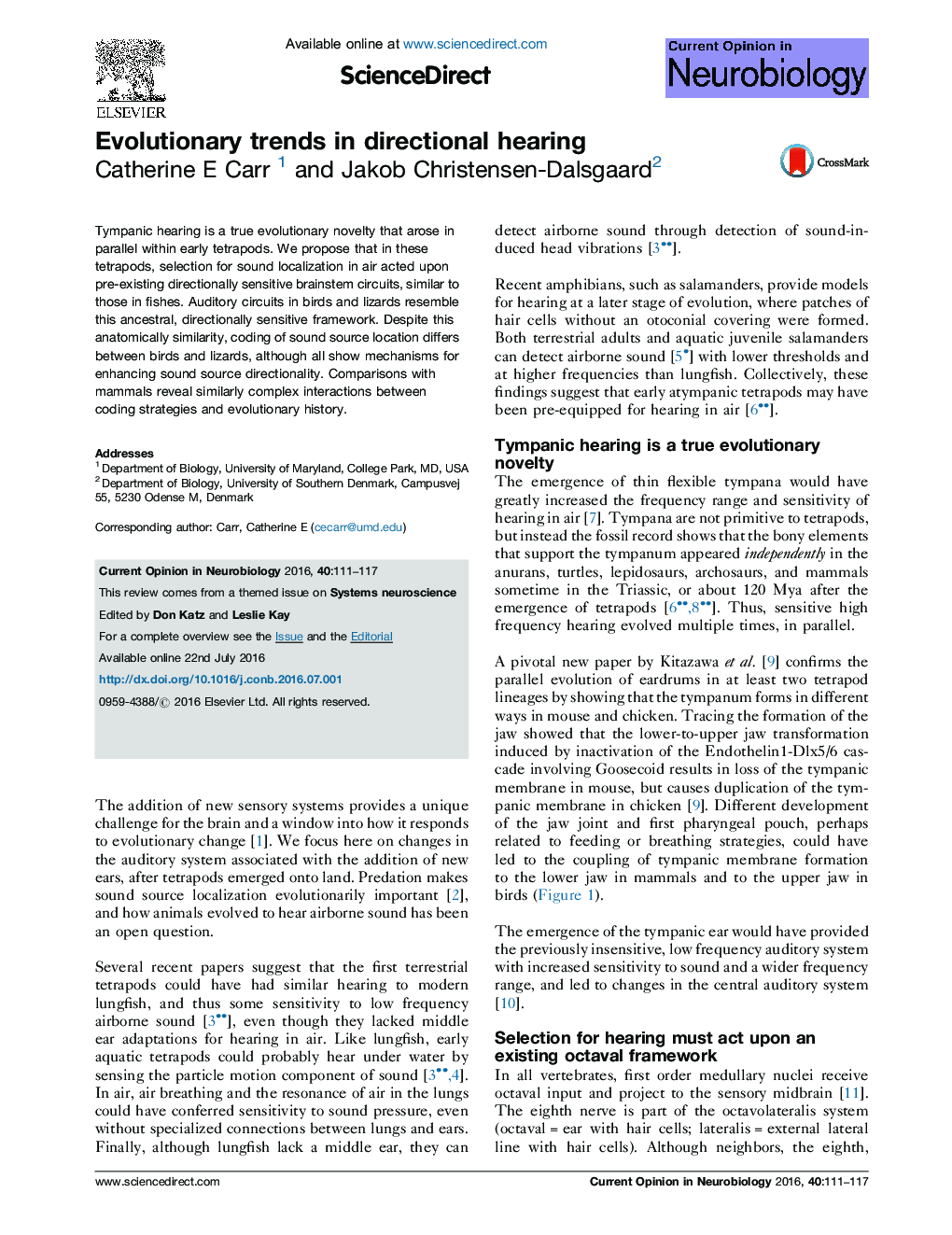| Article ID | Journal | Published Year | Pages | File Type |
|---|---|---|---|---|
| 6266063 | Current Opinion in Neurobiology | 2016 | 7 Pages |
â¢Early tetrapods may have been pre-equipped for hearing in air.â¢Tympanic hearing is a true evolutionary novelty, and evolved multiple times among the tetrapods.â¢Selection for hearing likely acts upon an existing octaval framework like that in fishes.â¢ITD coding strategies vary among land vertebrates.â¢Differences may reflect both evolutionary history and environmental constraints.
Tympanic hearing is a true evolutionary novelty that arose in parallel within early tetrapods. We propose that in these tetrapods, selection for sound localization in air acted upon pre-existing directionally sensitive brainstem circuits, similar to those in fishes. Auditory circuits in birds and lizards resemble this ancestral, directionally sensitive framework. Despite this anatomically similarity, coding of sound source location differs between birds and lizards, although all show mechanisms for enhancing sound source directionality. Comparisons with mammals reveal similarly complex interactions between coding strategies and evolutionary history.
